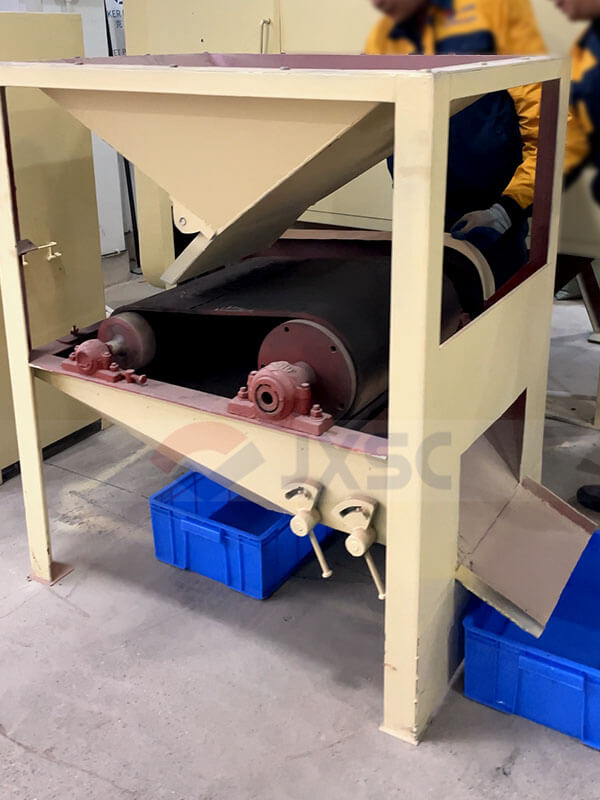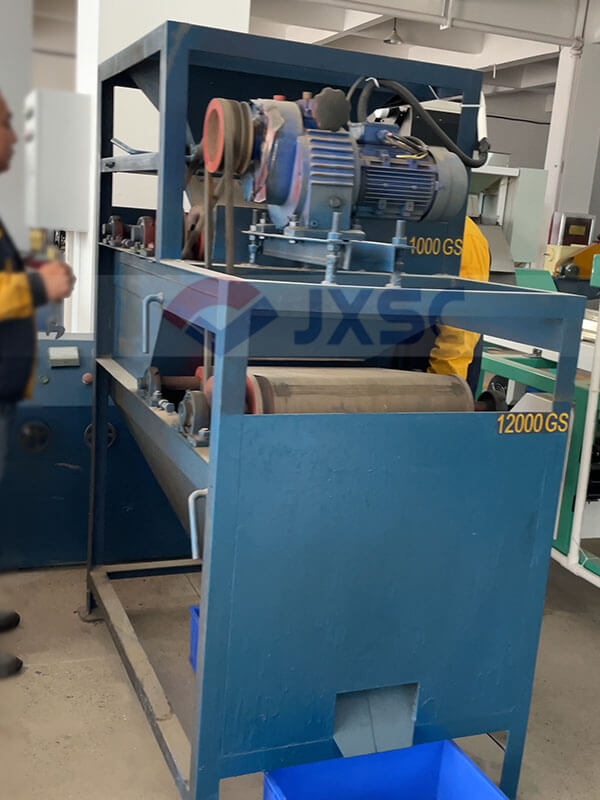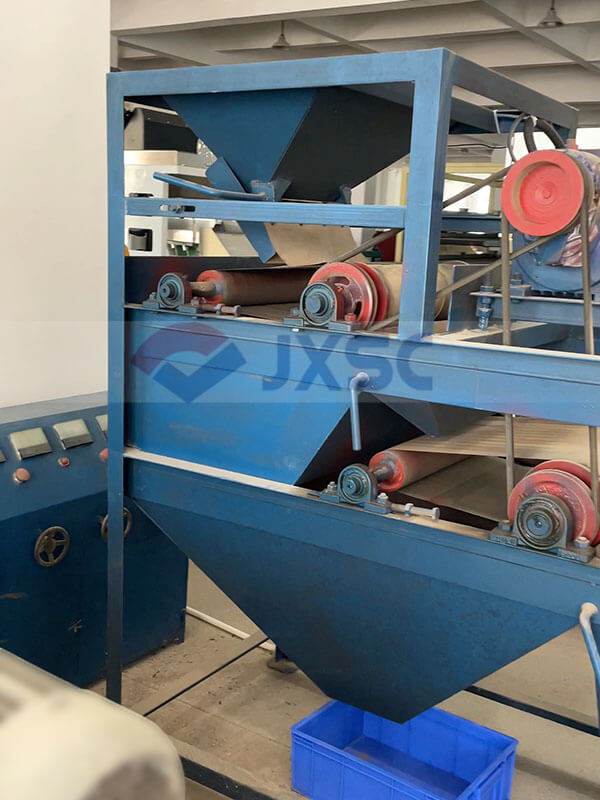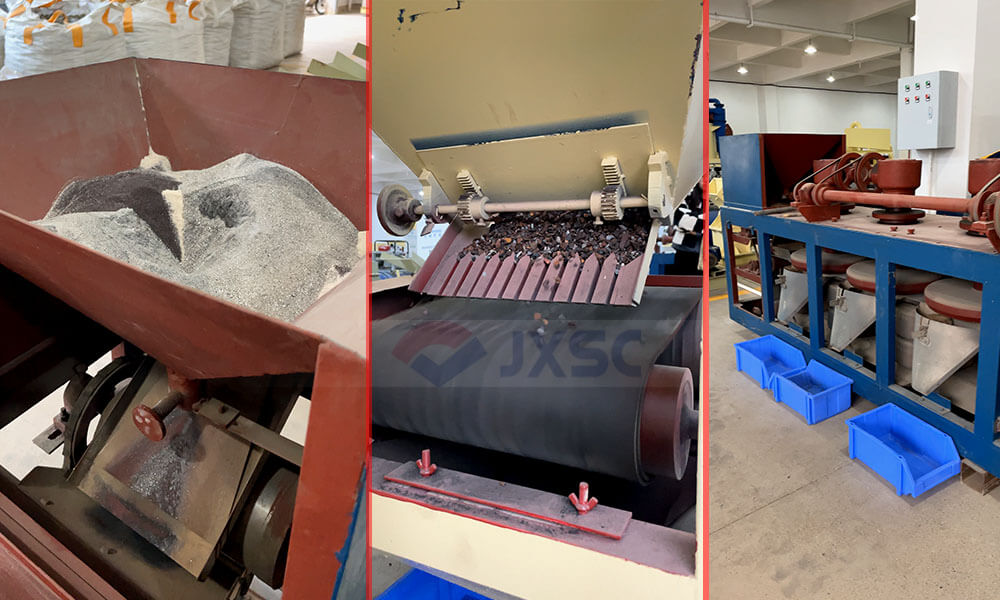In the field of mining separation, how can we achieve efficient mineral separation without relying on water resources? As an innovative alternative to traditional wet magnetic separation, high-efficiency dry magnetic separation testing technology uses a water-free separation process, not only saving over 90% of industrial water but also streamlining the subsequent tailings dewatering process, reducing energy consumption and environmental impact. This dry magnetic separation testing technology is particularly suitable for the purification of magnetic minerals such as ilmenite, magnetite, and manganese ore. It can effectively improve separation efficiency and mineral recovery, providing key data support for the resource utilization of low-grade ores.
Table of Contents
In laboratory mineral processing tests, high-efficiency dry magnetic separation testing technology is a key solution to addressing the water shortage challenge faced by mineral processing in arid regions. Key equipment includes a permanent magnet drum, high-gradient, and three-disc magnetic separator. By optimizing key parameters such as magnetic field intensity, drum speed, and sample particle size control, efficient separation of magnetic minerals (such as magnetite and manganese ore) is achieved. Compared to wet processes, dry methods simplify the tailings dewatering process, helping to reduce costs, increase efficiency, and enhance environmental protection.
What is high-efficiency dry magnetic separation testing?
Core Principle
The core of dry magnetic separation technology lies in the precise control of magnetic field intensity and gradient. When mineral particles pass through a magnetic field, minerals with different magnetic susceptibilities experience varying degrees of magnetic force. Strongly magnetic minerals (such as magnetite) are directly attracted to the magnetic pole surface, while weakly magnetic minerals (such as hematite) require a higher magnetic field gradient for effective separation.
Core Advantages
- This system requires no water resources, offering significant potential in arid regions or mining areas with stringent environmental requirements.
- Low energy consumption and low costs: By eliminating slurry transportation, concentration, and wastewater treatment, overall operating costs can be reduced by over 30%.
- Environmentally friendly waste disposal: Dry-separation tailings are dry, allowing for direct recycling or safe storage, reducing the risk of environmental pollution.
Applicable Ore Types
- Strongly magnetic minerals: magnetite, pyrrhotite (magnetic field strength customized upon request).
- Weakly magnetic minerals: hematite, limonite (requires magnetization roasting pretreatment, testing focuses on magnetic conversion rate after roasting).
- Special Applications: Mines in arid regions, tailings dry dumping and recovery, and iron removal from non-metallic ores (such as quartz sand and feldspar).
Dry magnetic separation testing equipment

1. Permanent Magnetic Drum Separator
(1) Principle
In a dry-type drum magnetic separator, the magnetic field strength must be adjusted based on the specific magnetic susceptibility of the mineral. Strongly magnetic minerals (such as magnetite) require a magnetic field of 1000-3000 to overcome inter-particle friction, while weakly magnetic minerals require higher magnetic fields or pretreatment to enhance their magnetic properties.
(2) Application
The permanent magnetic drum separator has a simple structure and utilizes high-performance NdFeB permanent magnets, resulting in low energy consumption and easy maintenance. It is suitable for separating coarse-grained iron ore, manganese ore, and other highly magnetic minerals. Its adjustable drum speed allows for optimized separation based on mineral characteristics, making it the preferred model for small and medium-sized mines. It is primarily suitable for rough separation testing of coarse-grained (1-5mm) strongly magnetic minerals.
2. High-Gradient Magnetic Separator
(1) Principle
A combination of electromagnetic coils and a magnetic concentrator (such as steel wool) creates a high-intensity (over 1.5T), high-gradient magnetic field within the separation chamber. As minerals, driven by airflow, pass through the magnetic field, weakly magnetic particles are captured by the magnetic concentrator, while non-magnetic particles pass through.
(2) Application
High-gradient dry magnetic separators are primarily used for separating weakly magnetic minerals such as hematite and ilmenite. Furthermore, their modular, multi-roller design facilitates capacity expansion to meet the needs of concentrators of varying sizes.


3. Three-Disc Magnetic Separator
(1) Principle
This device utilizes three horizontally stacked rotating magnetic disks, each with alternating permanent magnet poles. Minerals are evenly distributed across the disks via a vibrating feeder. The alternating magnetic field creates a “magnetic flip” effect on the magnetic particles, separating them from non-magnetic minerals.
(2) Application
The three-disc magnetic separator can separate multiple minerals simultaneously and is particularly suitable for processing fine-grained materials with complex compositions. This device utilizes a multi-layer staggered magnetic disk structure. By adjusting the rotational speed and magnetic field intensity, it achieves high-precision mineral separation, achieving a recovery rate exceeding 95%. It also features an intelligent control system that monitors separation results in real time and automatically optimizes parameters, significantly reducing manual intervention costs.
Dry Magnetic Separation Testing Process
Laboratory Testing Process
1. Sample Preparation
Ore samples are crushed to a -2mm particle size using a jaw crusher and a roller mill. The ore is then graded using a standard screen, with the oversize returned to the crushing stage to ensure uniform particle size distribution. During this process, the crushing intensity must be strictly controlled to prevent over-crushing. Weighing records for each particle size interval must be maintained to provide accurate particle size distribution data for subsequent magnetic separation testing.
2. Magnetic Separation Testing Process:
Appropriate magnetic separation equipment (such as a permanent magnetic separator or high-gradient magnetic separator) must be selected based on the magnetic characteristics of the individual minerals. The effects of key parameters such as magnetic field intensity, feed rate, and separation gap must be systematically investigated.
The test can be run for at least 72 hours using a batch feeding method. Operating parameters such as feed uniformity and air pressure stability must be monitored in real time, and key operating variables such as magnetic system position and separation drum speed must be adjusted promptly. Each condition should be repeated at least three times to ensure data reliability. The separation results are comprehensively evaluated using indicators such as magnetic product yield, grade, and recovery rate to provide a theoretical basis for industrial scale-up. The data needs to synchronously record parameters such as magnetic field intensity and ore feeding speed to facilitate subsequent optimization analysis.

Asia-Africa International (JXSC) offers dry magnetic separation testing equipment optimized for different minerals: permanent magnet drums, high-gradient, or triple-disc magnetic separators. These systems utilize rigorous laboratory sample preparation and magnetic separation testing, optimizing key parameters such as magnetic field strength and feed rate. These systems are suitable for the efficient separation of a wide range of strong and weak magnetic minerals, encompassing applications such as arid mines, dry tailings recovery, and iron removal from non-metallic ores. For customized mineral processing testing solutions tailored to ore characteristics (e.g., magnetic field parameter tuning and equipment selection), please contact us for laboratory-grade technical support!
